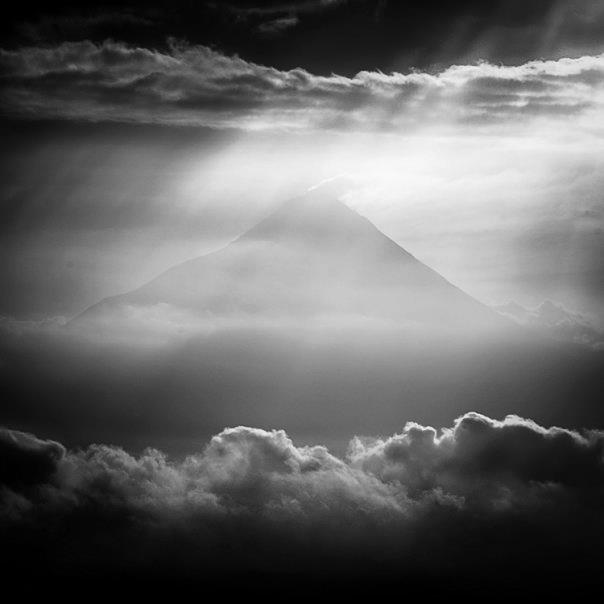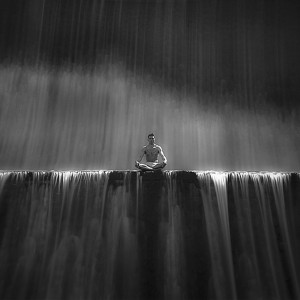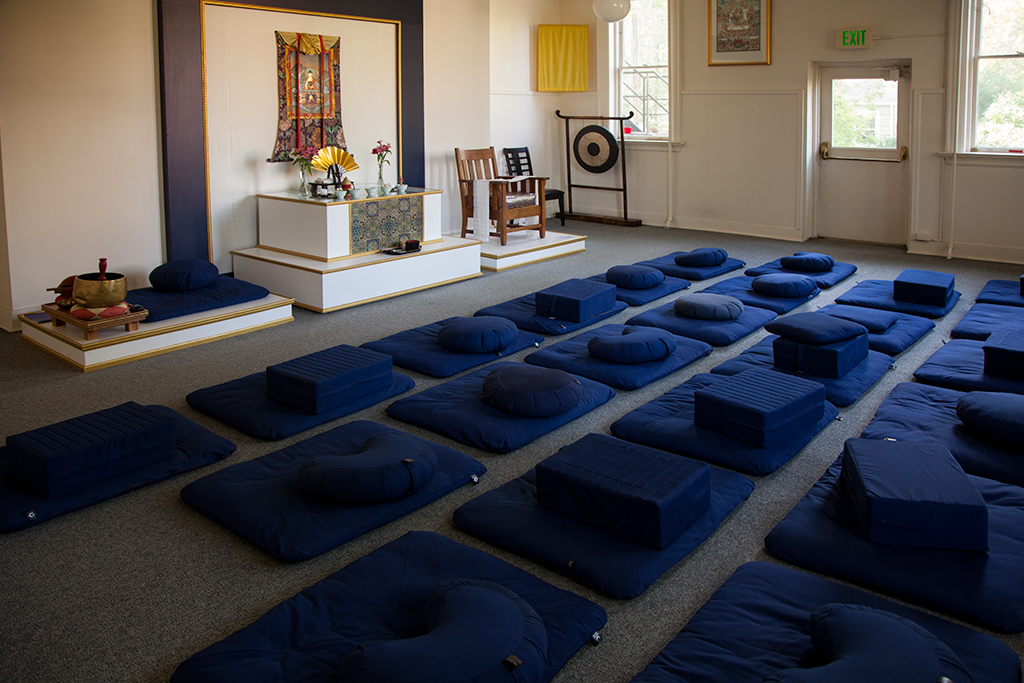An Ever-present Invitation to Ever-greater Openness

© Hengki Koentjoro.
In many traditions, the mountain is often viewed as a a symbol of the spiritual quest and can represent the path of discovery of our natural wisdom.
Their experiences remind me of poet Theodore Roethke’s haunting question: The death of feeling in a child: what is more terrible?”
What has become strikingly clear to me in working with students is that lurking beneath their knowledge, drives, compulsions and interests lies the seeds of a unique, and highly individual vision, the latent shape of a genuine human being. These essential characteristics are often covered over, encrusted with many layers of conditioning. But, I believe that students come into the classroom with a deep yearning to discover something about who they really are. I feel in them a sharp longing for truth; not the facts and figures they learn about the world, but a search for a genuine authenticity of being and expression. A way of being in the world that grows directly from a living inquiry: Who am I? What is real? What is my place in the world, in the cosmos?
Within the first couple of weeks of art or photography classes, a skilled, perceptive teacher can determine without a doubt whose images are whose, and can begin to identify an implicit shape and form of the student’s inner landscape and how they perceive the world. In one of my first assignments, I ask them to make a self-portrait without using themselves as a subject. They can use metaphor, allegory, or symbol with one caveat: no part of their corporal being can be in the photograph. Then the next week, I turn it around. Can you make an image that reflects the spirit of a place, the character of another human being, or the dynamics of an event, apart from your opinion of it? This assignment is very difficult, almost impossible for beginning students. It pushes them beyond their normal frames of references and opens them to something new—the possibility of both uncovering aspects of one’s essential self and opening at least to the potential of attending to the integrity of the world itself with a perception unimpeded by past attitudes and conditioning.
We know by now that the mere acquisition of facts and figures do not make genuine, whole human beings, nor do they contribute to the growth of wisdom or authentic being. The top-down, learning by rote style of teaching does not encourage creativity and the discovery of one’s innate intelligence, engender the empathy and humanistic perspective needed to heal the planet, prevent conflict and war, or offer the means to solve the intractable problems of the modern age.
Wisdom and corresponding growth of being are related to the whole person. Education, if it is to be effective, needs to cultivate not only the aptitude of the mind, but also the sensitivity of the body, and the knowing of the heart. Where and how do we learn to embody empathy, compassion, and mindful intelligence? Did you learn this in school? I certainly didn’t.
CRAZY WISDOM
In my youth, I detested school. I wanted to have fun learning, to cultivate my passion and curiosity, and to engage my creativity. But school as I knew it was boring and listless, smothering the creative fire of learning and I couldn’t change my teachers or my school’s curriculum. I went to a Catholic school until eighth grade. I would stand in front of the altar in the church and feel, in some deep and unknown part of myself, a yearning for the miraculous. However, I felt sad that I was never taught the means through which I might touch the essential parts of my being that were naturally interrelated with these youthful intimations of infinity.
I was lucky to find powerful teachers outside of school who made learning both challenging and joyful, and who taught my colleagues and I to learn about ourselves and the world equally, with seamless boundaries. My photography teachers, Minor White and Nicholas Hlobeczy, set a broad example of mindfulness and a deep, living inquiry at the heart of the educational process. They taught intuitively and, some might think, with a crazy wisdom, pushing us beyond our perceived limitations and unseating our comfortable attitudes and beliefs. They punctured our false images of ourselves, time and again, with grace, kindness, and skillful means. Chögyam Trungpa refers to crazy wisdom as the “action of truth,” like a thunderbolt that cuts through deception to awaken clarity and understanding. We learned first hand of an intelligence that lies within us, inclusive of authentic thought, feeling, and instinct. We must allow for the action of truth to still the surface mind yet open the heart.
The question I have come to hold deeply is: How do we, as educators, convey the necessary knowledge, relevant skills, and humanistic perspective necessary for life in the 21st century, while at the same time supporting the growing individuality of the student? Can we impart necessary cultural knowledge without divorcing this learning from the essential nature of the student? The most important learning experiences are disruptive, shaking us out of our well-worn grooves of thought and expression, allowing us to find something new and authentic. My most significant teachers offered challenges often in the form of subtle and compassionate shocks to awaken both our minds and feelings to the investigation at hand. Their methods were highly individual and unique.
In my first photography class at Case Western Reserve University with Nicholas Hlobeczy, he sat like a still Buddha in the front of the room as we noisily entered for the first class. He did not move or speak for several long minutes. We were brought up short, arrested into the present moment. Finally, he said slowly and carefully, “It is my belief that creativity arises from stillness.” And indeed, the entire class that semester was a vital exploration of our inward relationship to the outer world through a camera through the medium of striving towards a wordless awareness.
One of the primary goals of education should be to focus on learning to see what is, beyond the screen of our opinions and complexes. Knowledge combined with clear perception and accumulated experience can become a pump at the fountain of wisdom. Opening the heart and discovering our authentic nature leads to a holistic knowing of self and others and cannot be ignored in the educational process.
The Dalai Lama teaches that “the purpose of education is to reduce the gap between reality and appearances.” Seeing arises in the space between knowing and not knowing, in the ambiguous region between knowledge and direct perception. This is the tension, the vital edge where education resides. Knowledge uses past experience and former associations as its base. Perception, on the other hand, can only be in the moment. Direct seeing is fresh and unimpeded by the past. We cannot see clearly through the lens of past knowledge even though we automatically fall into this mode as our path of least resistance. Genuine perception needs an effort: to quiet the mind. We can only see clearly through the lens of the mind’s stillness that mirrors back the true nature of the thing observed.
My great concern in postmodern education is that everything is reduced to what can be proven or observed by external means of measurement, thus discounting what is not easily quantifiable: authenticity, originality, intuitive insight, and deep empathy. Conventional western inquiry remains in the third person, striving to be objective and non-personal, while first person inquiry holds the potential to teach us about the world and ourselves in equal measure. While the shortcomings of our current educational system have been widely recognized and amply discussed, there are encouraging lights on the horizon.
BASIC SANITY
Most spiritual traditions acknowledge an innate intelligence within us that is covered over, encrusted with layers of conditioning and egoism. This form of intelligence, which is beyond the realm of purely rational thought is often visceral or connected to subtle feeling and represents the seeds of our true nature. Tibetan Buddhist Lama Chögyam Trungpa Rinpoche knew this intelligence as basic sanity. It is the sanity that can see ourselves as we are, without attempting to disassociate from our neuroses and ego-attachments, but rather to accept them and work with them. Trungpa states, “Developing basic sanity is a process of working on ourselves in which the path itself rather than the attainment of a goal becomes the working basis.”
Trungpa incorporated this work into a broad educational initiative in the founding of Naropa Institute in Boulder, Colorado, later to become Naropa University, a fully accredited college with a wide range of Graduate and Undergraduate programs. Charles Lief, current President of Naropa, describes the role of sanity in education: “Basic sanity is close to what I think of as wisdom. Perhaps it’s more foundational. I think it provides a kind of filter through which those experiences, understandings and realizations that we might call manifestations of wisdom, can arise. … The whole point of contemplative practice is to continue to at least have some possibility of touching in from time to time with those qualities of sanity that allow wisdom to evolve.”
The current practice of Naropa is to integrate traditional scholarly disciplines with contemplative practice. Mindfulness and awareness are linked with academic work and every aspect of learning. Trungpa explains: “In the Buddhist educational tradition, an important ingredient of wisdom is the critical intelligence that can discriminate particular qualities of phenomena accurately. Such intelligence is spoken of as a double-edged sword that cuts through both obscurations in the object of investigation and in the one who is investigating. When you follow these principles of education, you begin to use your logical or critical intelligence to examine what is presented to you. That critical intelligence is also critical intelligence about yourself. That critical intelligence is applied two ways; towards what is presented to you, the educational material, as well as towards who is going to be educated. So you work with yourself as well. The two blades of the sword work simultaneously. Then you begin to find yourself examining things constantly. The process of education becomes very precise and clear and absolutely accurate.”
Interspersed within Naropa’s curriculum are courses on contemplative practice and meditation practicums. Naropa’s approach combines deep respect for scholarship and the arts, as well as for the collective discoveries available in coming together. Here, intelligence can be extended to the practice of collaboration and the ideal of a true “collective intelligence.” The dynamic, reciprocal relationship between me, you, and we can bring startling new insights and expanded dimensions to the educational process.
Thomas Coburn, President Emeritus of Naropa, believes “that other people are perpetual correctives on our own self-absorption. I think that openness to others is necessary to become open to a larger reality — a co-created reality in many ways. I know now that of all the multiple variables that feed into effective teaching and effective learning, there is one that rises above the others — and that is for the teacher to catch students at the teachable moment, when they are extended beyond their comfort zone, and hopefully when the faculty member is extended beyond his or her comfort zone. So you can together create that edgy, vulnerable space where unanticipated things happen.
There is something in the water or in the air that I have come to see profoundly connected with the founder. What I now have come to see at Naropa is what I intuit as ‘an ever present invitation to ever greater openness.’ I think that is exactly what Chögyun Trungpa was talking about.”
In this light, I have come to understand, over many years, that the classroom itself is the teacher. In a properly functioning classroom, students and teachers learn equally. Poet Theodore Roethke observes that a teacher is one “who carries his own education on in public.” Through unfailing sincerity and through the teacher’s own efforts to discover his or her own authentic thought and expression, we facilitate an environment where genuine learning can take place. I now go into each classroom with a question: what is in me and what is in you that can be discovered and shared, no matter what the subject under consideration?
One of the primary goals of education ought to be helping the student discover something of themselves and for themselves. Learning to engage the quiet receptivity of the mind and openness of the heart, learning to look within and without simultaneously, and learning to contribute to the dialogue of our times in whatever way suits the temperament and capacities of the student; these aims constitute valuable goals of the educational process. Contemplative education can provide a foundation for both our work in the world and can open to the deeper spiritual work towards awakening found within the world’s great, authentic teachings.
Trungpa reminds us, “Becoming ‘awake’ involves seeing our confusion more clearly.” The action of seeing what is can change us if we allow it to act on us. And the power to understand and even change the world can only begin from seeing what is, the truth about our condition as individuals and as a culture. There is great hope in seeing. Awakening is paradoxical. Through seeing and accepting the rust, we may find the diamond. In the unfinished novel Mount Analogue by René Daumal, about climbing the mythical mountain that represents the wisdom quest, a group of intrepid seekers begin the ascent. Their leader, a Father Sogol, came to a sharp realization. He said: “Far within me, where the memory of what I am is still unclouded, a little child is waking up and making an old man’s mask weep. A little child looking for…help in order to become what he is without imitating anyone.” At that moment of recognition of truth, he looks to the ground and finds a peradam, a diamond-like crystal which is a symbol of our lucid moments of spiritual clarity and understanding.
The ascent of Mount Analogue takes place with others, of differing knowledge, skills, and specialties. More than anything we need each other. I am a seeker in the company of other seekers, some of whom have more experience than I, and some with less. And we need guides who are a little farther along the path than we are. The “teacher” can arise in the space where we work together. Something can descend, a kind of living intelligence, when two or more are gathered together sharing the aim of a search for wisdom and understanding.


